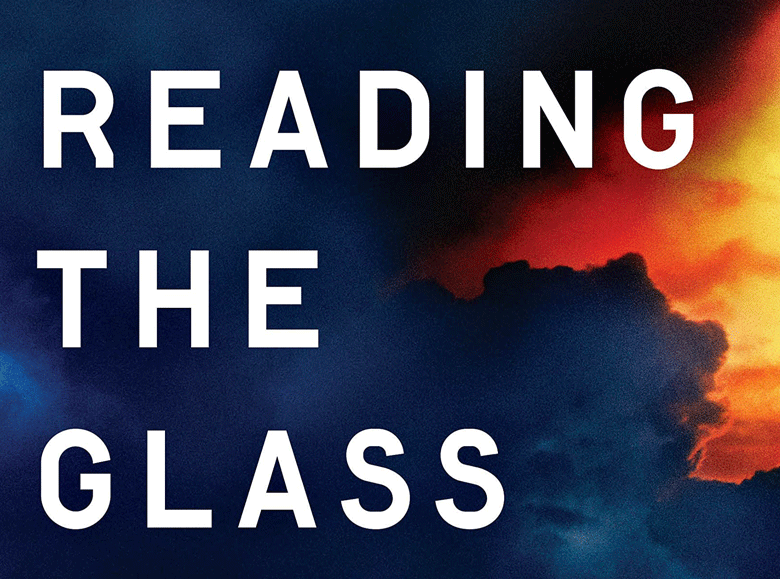Reading the Glass: A Captain’s View of Weather, Water, and Life on Ships
By Elliot Rappaport, Dutton/Penguin Random House (2023)
A few of us get to know everything: doctors, editors, various experts, philosophers, TV pundits, religious gurus—and, now after reading Elliot Rappaport’s Reading the Glass: A Captain’s View of Weather, Water, and Life on Ships, I must add sea captains.
Rappaport has served worldwide aboard a variety of vessels, including Maine Maritime Academy’s schooner Bowdoin and two sail training ships of SEA Education Association that have taken him across the Atlantic, into the Arctic, and to the far reaches of the Pacific.
In the process he’s learned just about everything there is to know about the world’s weather, sea conditions, and maritime history—plus lots more about customs on faraway islands, relationships aboard ship, what it’s like to make difficult decisions under life-threatening circumstances—in short, all the important things one can only learn from time at the helm in the dead of night, on the bridge, or in the privacy of the captain’s cabin.
It’s this point of view that makes Reading the Glass so fascinating, even to a sometime sailor like myself.
Lest he leave the impression he’s always right, this author/captain isn’t afraid to admit he’s wrong, especially when it’s time to turn the ship around as conditions deteriorate. Predictions are only as good as the information that goes into them, Rappaport makes clear, and new or better information can change everything.
“The Pitcairns,” he writes of the islands made famous by the Bounty mutineers, are “the newest rocky extrusions of a continuous land factory” where undersea volcanoes beget mountaintops…
His is a voice with real authority, made more so by the admission that from his shipmates’ perspective, a captain with the guts to listen to others is the best kind of captain to have.
Some of this book’s best passages are Rappaport’s descriptions of weather and the forces that drive it from below, on the sea surface, or aloft. Natural forces merge with history at times.
“The Pitcairns,” he writes of the islands made famous by the Bounty mutineers, are “the newest rocky extrusions of a continuous land factory” where undersea volcanoes beget mountaintops surrounded by barrier reefs, all exacting their price on water temperatures, ocean currents, and the atmosphere moving overhead. Traditional mariners in canoes learned the ways of such places, traversing vast stretches of the Pacific long before modern navigation.
“When I’m sailing other coasts,” Rappaport writes from an isolated harbor in the western Pacific, “the chart edges tend for me to fill with the familiar, even when I’m far from home… here is the opposite: We are surrounded at close hand by amoebas and in the distance are locations even more mysterious… clouds boil into the sky around us, atmospheric volcanoes that I suspect are driven by massive evaporation and instability over the warm puddles of lagoon water, underlit by a fantasy palette of green and blue, they hover above the shallows and then drift offshore, bringing us hourlong lashings of rain, sudden calms followed by lurching gusts that render sailing almost impossible, the timing between torrents too short to set sail productively,” he writes.
“’This is like trying to pitch a tent at the end of an airport runway,’ I tell the mate.”
He takes in sail, starts the ship’s engine, and imagines an early French navigator “floating helpless in his wooden ship, hung with creaking spars and frayed hemp canvas. He asked for it, the islanders might say, standing by their canoes hauled safely up on the beach.”
From melting Greenland ice to the flooded subways of New York following a stronger-than-usual hurricane, Rappaport explores the unfolding catastrophe of climate change.
“Do sailors now see the effects of climate change at sea?” he wonders. “Are the storms worse? For working mariners the one-storm-at-a-time imperative of seafaring can make longer patterns more difficult to visualize,” he writes. “But here we are, I think, in mid-September, with two months left of hurricane season and already out of names. This once-in-a-lifetime occurrence has happened twice since I bought the car I am driving. It will happen again in 2021.
“On the radio I hear that America’s dry western forests are ablaze from Los Angeles to Seattle. The jet stream carries their microscopic particles to us here in New England, a high plume of dust that’s drawn a pink-gray scrim across the early morning sky.”
Then the early sun bursts into the center of his windshield, “seemingly near enough to visit—there is a star out there, I remember—a thermonuclear forge. It is 93 million miles away but, like an overfilled woodstove, suddenly too close for comfort.”
For a sea captain who knows everything and understands the meaning of the barometric glass, the message is disturbingly clear—clear enough, he hopes, to change course before it’s too late.
David D. Platt is former editor of The Working Waterfront.





